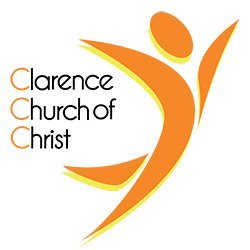“The accused must stay in the city of refuge until the death of the high priest; only after the death of the high priest may they return to their own property (Num. 35:28).”
Where in WNY would we call a place of refuge. Would it be a specific city? A specific community? A specific building? The Israelites of old had such a place — cities that God directed them to establish — that would serve as places of refuge for those whose lives were in jeopardy. These were cities established for the protection of those who took the life of another, unintentionally. A place of security for those entangled in the complex web of a sinful world.
We, like the Israelites of old, live in world where intentional deaths happen, and where unintentional deaths happen. Almost every night the local news reports on some kind of incident where a death occurs — whether intentionally or unintentionally. It could be a murder, or it could be a fatal 15-car pile-up during a lake-effect storm on the NY State Throughway — one intentionally caused, the other, most likely, unintentionally caused. Whatever the incident may be, we all can relate to living in a world where death is a constant reality.
And, to speak of death, is to also speak of the root of death — which, as the Bible reveals, is sin. Death, as The Apostle Paul’s letter to the Romans tells us, is wage of sin (the renumeration of sin). In some mysterious way, the absence of life is a result of sin — whether from intentional acts or unintentional acts. When the two forms cross, an image of our daily life appears. We all recognize the flux of a world distorted and entangled in the effects of sin. Sin and it’s consequence surrounds and preys upon us and seeks to put a choke-hold on us.
By now, you have recalled this felling in your own life. It is in these times that we yearn and seek for a place of refuge. We seek to rise above the mire of sin to gasp a breath of life. By thinking about this reality in our own lives, we can get a sense of the feelings, an Israelite felt when the avenger of death was seeking their life. We can sense the desperation of an Israelite fleeing and seeking a city of refuge — a place where they could rise above the mire of death and sin.
In the New Testament, we don’t find Jesus teaching about cities of refuge, but we do see him describing himself as a place of refuge, “Jerusalem, Jerusalem, you who kill the prophets and stone those sent to you, how often I have longed to gather your children together, as a hen gathers her chicks under her wings, and you were not willing.” Here, we see Jesus’ heart. We see that he longs to be the place of refuge for all people. In the Old Testament cities of refuge, we see a foretaste of The Place of Refuge: Jesus.
You notice in the Old Testament passage at the top, that the city of refuge was not the pinnacle of freedom — it was just the beginning. Rather, it was the death of the high priest that brought about complete freedom — complete freedom being the release of the person to go back to their home. As we read this verse on this side of history, my hope is that we see that it points toward Jesus. I hope you see that Jesus is the refuge we should be seeking. I hope you see that, as a more perfect high priest, Jesus and his death is where our complete freedom comes from (Heb. 7:17-18, 23-24). I hope you see that Jesus is the place that we can flee to — that pulls us out of the mire of sin and death and gives us life. It is not a U.S. City. It is not a neighborhood in Buffalo. It is not a political or religious building. It is in the person and life of Jesus. But, where those of us in Christ abide in the U.S., in Buffalo neighborhoods, and in WNY buildings and facilities — there the refuge of Christ can be found — because the body of Christ is there — Jesus’ very presence.
Thanks be to God that Jesus has been revealed to us as THE place of refuge and freedom.
